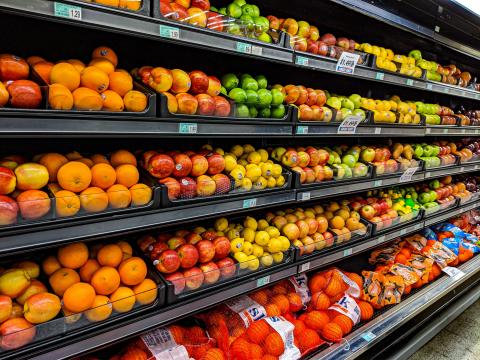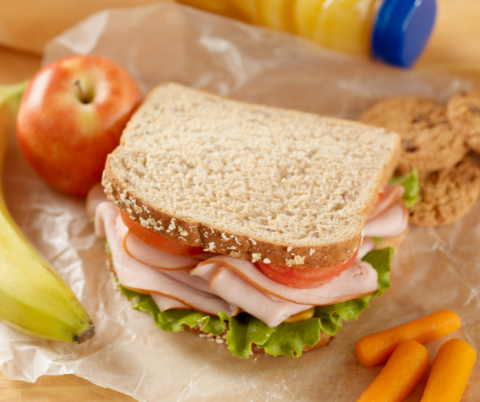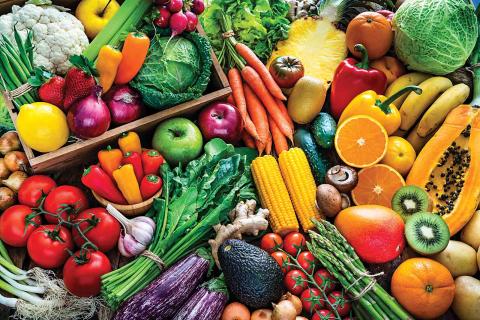As children across England return to school this week after the summer holidays, many parents will be wondering what to give their children for lunch. Ideally, all school children should have access to a hot, nutritious meal at school. This would help them to be focussed in class, learn better and reach their full potential, instead of being distracted by hunger and struggling to concentrate. As school meals are required to meet the School Food Standards laid out by Government, this should also mean that children are getting nutritious food that is critical for nourishing their bodies to help them grow up healthy.
However, in England not all children can get a school meal. 900,000 children living in poverty across the country do not qualify for the Government’s Free School Meals scheme due to incredibly stringent criteria that Government set for children they deem to be deserving of a Free School Meal. Despite being above the income threshold, many of these children missing out on Free School Meals are not able to afford lunch from the school canteen and instead are reliant on packed lunches or unable to afford any food at all. Research shows that less than 2% of packed lunches meet the School Food Standards and so offer a far less nutritious option than school meals.
The Feed the Future campaign led by a coalition of charities and supported by retailers, health professionals, education professionals and many others is calling on the Government to urgently expand the Free School Meals scheme so no child living in poverty misses out. Despite 17% of households with children experiencing food insecurity, Government have yet declined to take action on this.
However, while we wait for Government to recognise the severity and urgency of child food insecurity, retailers can play a crucial part in helping customers struggling through the cost of living crisis by making healthy food affordable for these low income families. We know that many parents want to send their children off to school with a healthy, tasty packed lunch but often this is not the cheapest or most convenient option. Our polling found that nearly two thirds (64%) of low income families (C2DE) would find it helpful for them in feeding their children well if retailers offered a lunchbox meal deal so that they can easily buy items to make up a week of healthy lunchboxes for their children.
We conducted some light touch research into how much a reasonably healthy packed lunch currently costs from the five retailers with the biggest share of the market.
The lunch contains:
These food items have been taken as indicative items that can form part of a healthy packed lunch and are not an exhaustive list. We have chosen these items to gain a balance between a nutritious lunch and one which children may realistically eat (although of course all children have individual preferences!) as it’s important for low income families to provide food that their children will not reject so it doesn’t go to waste. Portion sizes would need to vary depending on the child’s age but this lunch is likely suitable for an older child, or a younger child including snacks eaten over the course of the school day. We have looked at the cost of the lunch across the five retailers with the biggest share of the market.
The price for the packed lunch across the retailers came to:
The cost of the weekly packed lunch varies across the retailers form £8.39 - £11.42. Whether products are on offer makes a large different to the cost of the basket and so this may affect which retailer in the most economical to shop at each week.
In comparison, a Free School Meal allowance is about £12.50 per week and so for children paying for a school lunch, a healthy packed lunch is not always significantly cheaper than buying lunch from the school canteen depending on which retailer and on what the school canteen offers.
The price of the individual foods that make up the lunch were:
Our Kids Food Guarantee initiative is calling on retailers to ensure that the cheapest options of products such as yogurts also have the best health profile. Interestingly there is wide variation across retailers in the price of the plain yogurt pot with Morrisons, Sainsbury’s and Asda over twice as expensive as Tesco and Asda. In Morrisons, Sainsbury’s and Aldi the yogurt is the most expensive item in the packed lunch box by a significant margin. If we had switched this to a less healthy yogurt in these retailers it would have been much cheaper, for example in Sainsbury’s the equivalent for a flavoured yogurt would be just 24p for pot, less than half the price of the plain yogurt. For families on tight incomes, this type of price saving pushes them towards buying less healthy options for their children.
Overall, the findings show that a reasonably healthy packed lunch can be bought relatively cheaply across the retailers but there is room for improvement. As part of our Kid’s Food Guarantee we are also calling on retailers to offer lunchbox items that are compliant with School Food standards and make up 5 lunches that can be bought at affordable price point, for example through a multibuy deal. No retailer currently has such a meal deal but this would go along way to helping time-poor families on tight budgets to provide their children with a healthy packed lunch. Items that could be included in any such deal include; wholegrain or 50:50 wheat products such as bread, rolls and wraps; snackable fruit and veg such as apples and carrots; sandwich fillings such as spreads and cheese; and single portion yogurt pots.
While we hope to see Government extend Free School Meals so that the most deprived children are not outpriced of a hot, nutritious lunch with their peers, in the meantime supermarkets need to ensure they are selling a healthy, convenient packed lunch at an affordable price.
Method details
- Products were available online from retailers websites 30th August – 2nd September.
- Multibuys were not included, single promotions were included.
- The closest comparable product between retailers was selected.
- The price given is for the proportion of the product needed for the portion sizes given, not the full cost of the item.
- The full list of products analysed from each retailer is available here.





